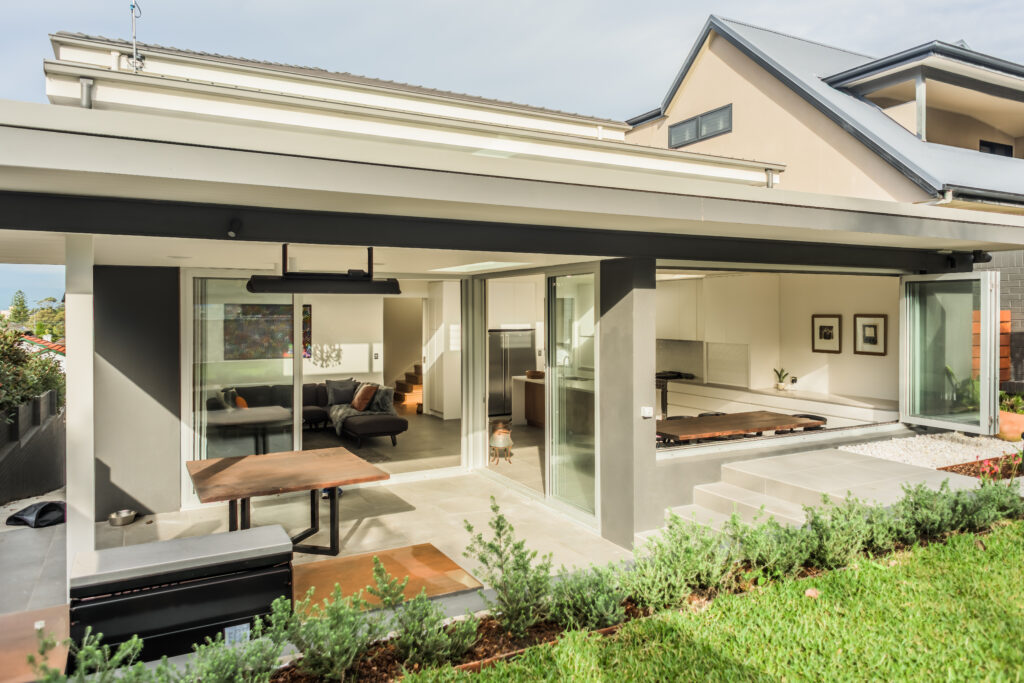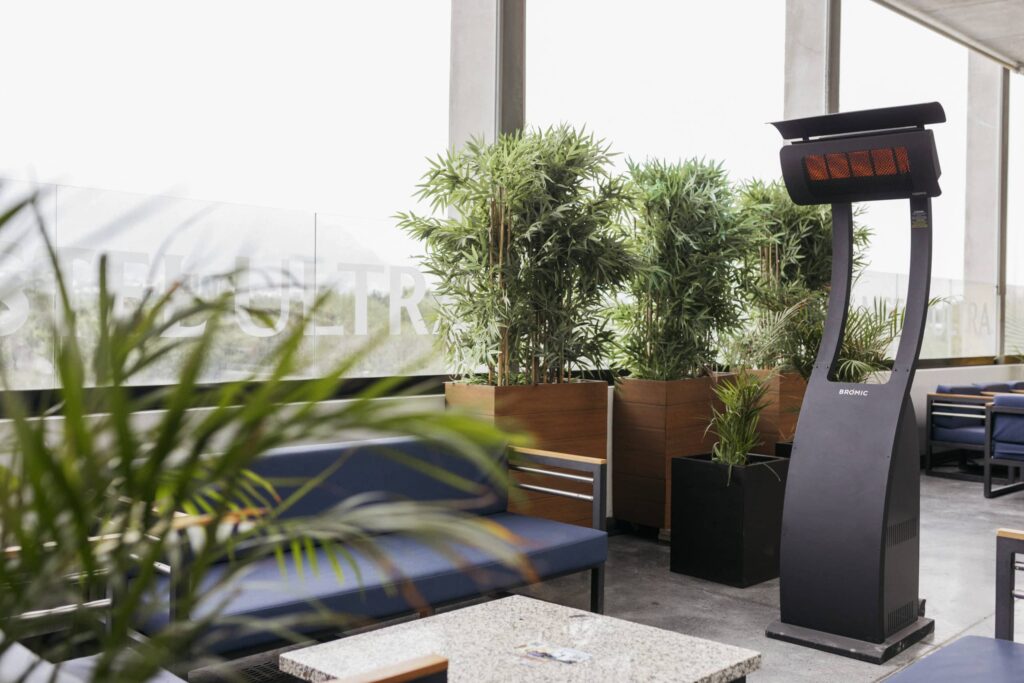Patio heaters are a great choice when it comes to extending the outdoor season. However, one of the key questions many people ask is whether gas or electric patio heaters might be the better choice. There are obvious benefits to both. Ultimately, which type works best will depend on the size of the area to be heated, existing power sources, and also personal preference in regard to appearance and control of the heater. Let’s take a look at some of the key arguments for each option.
Electric outdoor heaters – versatile with outdoor appeal
One of the key advantages of having an electric patio heater is flexibility. There is very little an electric heater can’t do. With heat coverages of up to 15m2, they’re great for smaller spaces that might not have a lot of natural ventilation as there is no concern over carbon monoxide emissions. They can also be used in areas prone to wind as there is no risk of the heater blowing out. A lot of the top end models can also be dimmed to ensure they offer just the right amount of heat. For even more control, pair your electric heater with your home automation system.
They also tend to offer more flexibility when it comes to mounting options as they require smaller clearances. As such they’re not only great underneath umbrellas or awnings but can also be recessed directly into flat ceiling. This makes them the ideal outdoor heating solution for design-focused spaces that want to preserve a sleek, minimal appearance. Once installed, they require very little maintenance other than a quick wipe-down or dusting to remove cobwebs. In addition, there are also electric heaters that are available in 316 marine-grade stainless-steel to reduce the risk of corrosion in harsh coastal environments.

Gas outdoor heaters – powerful with great coverage
Gas patio heaters come in either natural gas or propane versions and are known for their powerful heat output. Depending on their power they can heat spaces of up to 20m2. Contrary to electric heaters they do require a least 25% of the space to be open to allow enough natural airflow for safe operation. They are therefore a great addition to larger, well-ventilated outdoor spaces, where they can be easily switched on and off via remote control or scheduled by a timer. While natural gas models will require to be attached to a gas line, portable propane models can run off an internal propane tank and can be moved around as required. This also means they can be easily moved out of the way and stored away during summer.
Although gas heaters are still more susceptible to wind than their electric counterparts, models like Bromic’s Platinum Smart-HeatTM Gas, are equipped with ceramic fascias that not only protect the burner from wind, but also ensure that heat is spread evenly. Most manufacturers will recommend to inspect gas heaters on a regular basis to ensure there is no debris like spiderwebs or insects covering the heating elements and blocking the burner from sparking.

What about costs?
Running costs will vary per model and power output (wattage for electric and BTU for gas). In general, natural gas tends to be the cheapest way to heat a patio, followed by electric and then propane. Below is an estimate on how much it would cost to heat a 200ft2 patio with Bromic’s range of patio heaters.

Still unsure on whether to choose gas or electric patio heaters? Head over to our complimentary design service page and one of our heating experts will be able to advise you on the ideal solutions for your project.
















